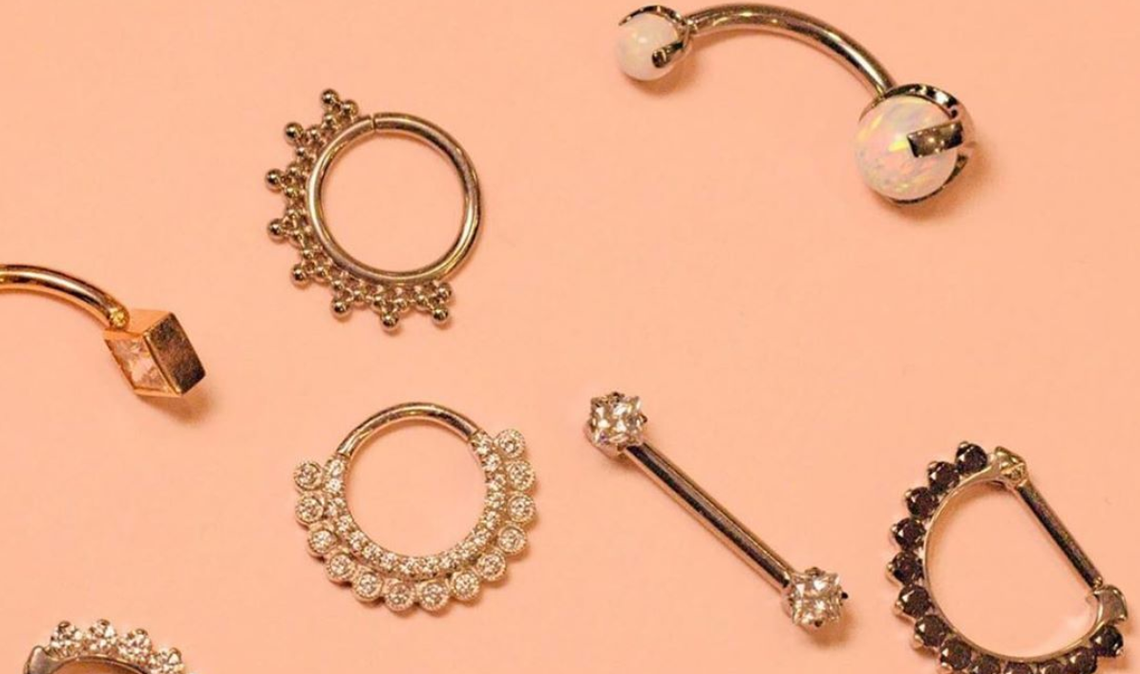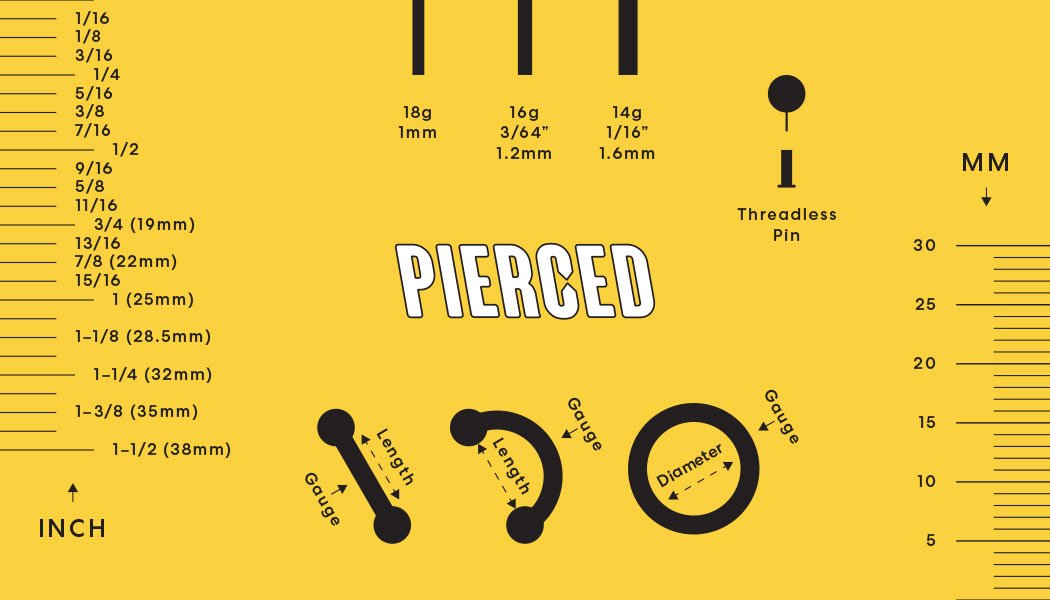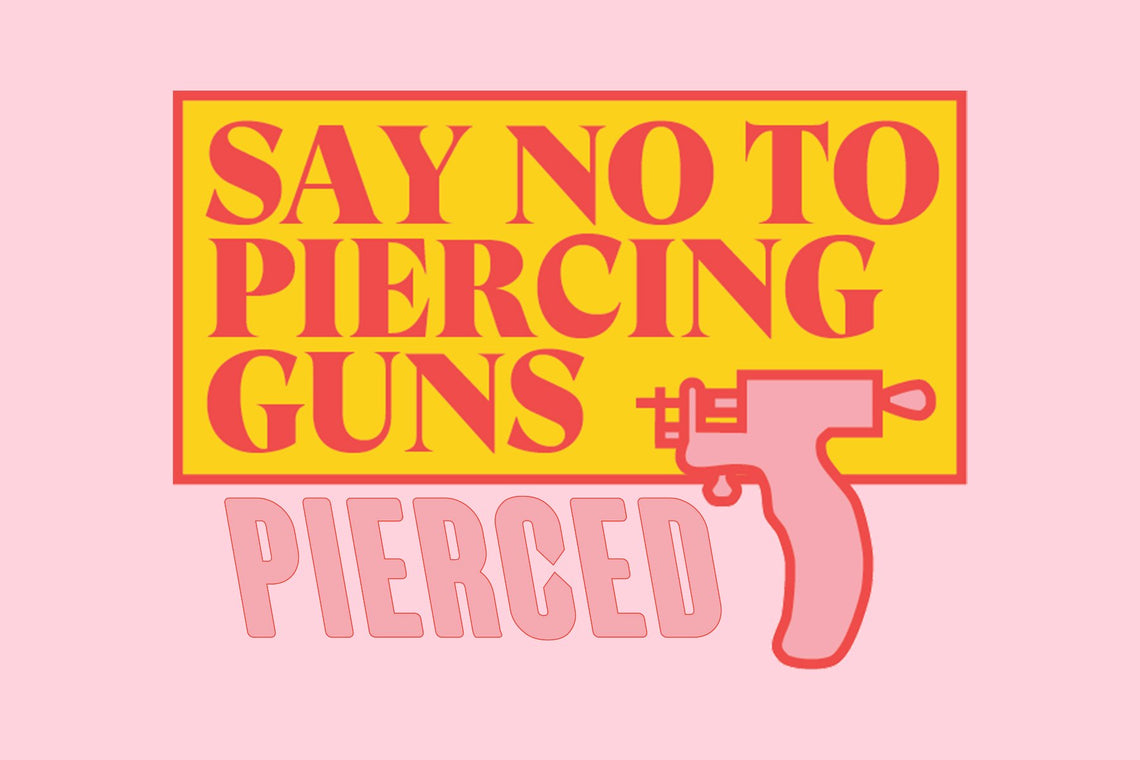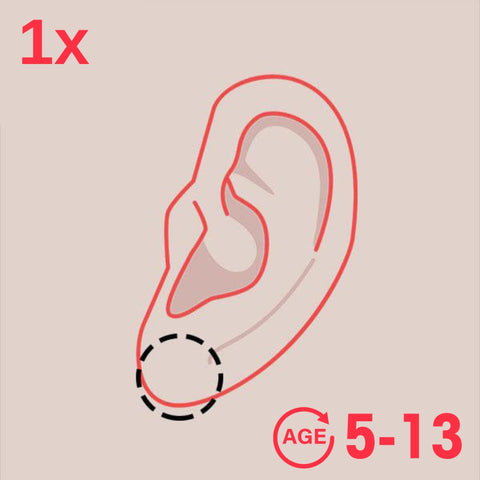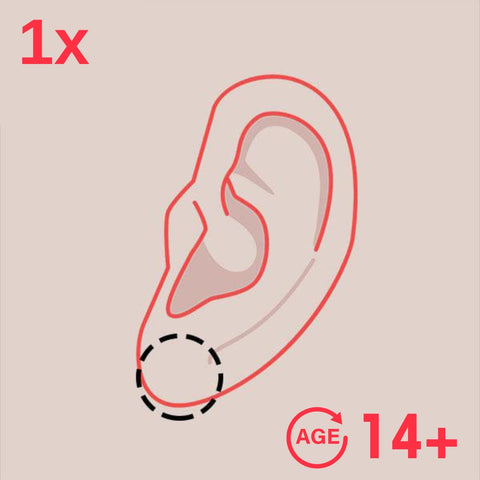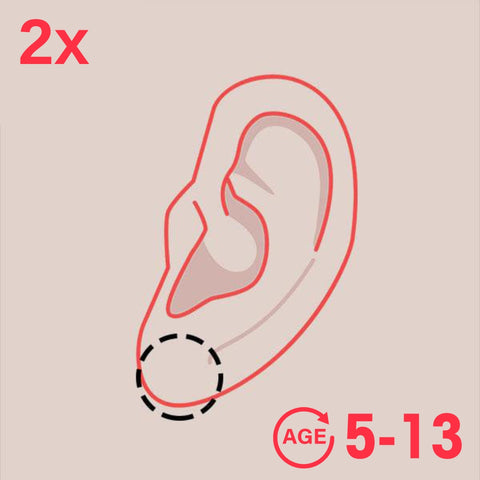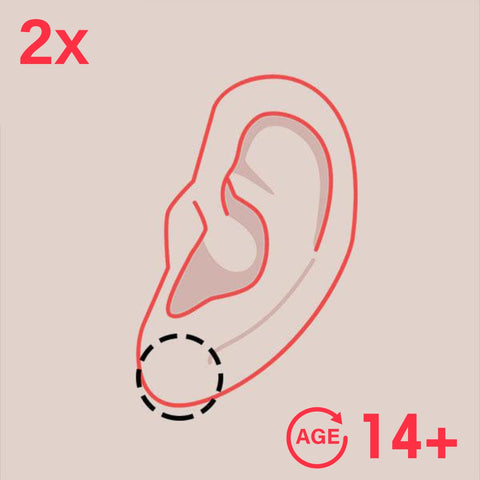Pierced is Newmarket’s new destination for ear piercings and jewellery. Ear piercings are the most popular piercing category for all ages and genders. But within this category, there is a huge variety of options.
Cultivate the style that fits you with ear piercings and jewellery that fit your unique personality. Familiarize yourself with the coolest earrings and piercings in Newmarket.
What Are The Types of Ear Piercings?
Ear piercings are among the oldest body modifications in the world. Dating back to at least 1500 BCE, there has been plenty of time to create all sorts of new ear piercing types. From lobes to tragus, There are plenty of options for ear piercings.

Earlobe Piercings
Lobe piercings are the classic ear piercing. In North America, 4 out of 5 people have had their earlobe pierced. The earlobe is a large area and one of the safest to pierce. It is the least painful and easiest to care for piercing.
It is one of the few piercings that can be done at young ages, with even babies able to get them. The pain associated is momentary and hurts less than a bee sting. Healing is fairly quick, most people can replace the initial jewellery after just 6 weeks.
Lobe piercings are most people’s first piercing.
Transverse Lobe Piercings
A transverse lobe piercing (the lower piercings in the above image) is a low-pain piercing as well. Instead of piercing front to back, the piercing is done horizontally, along the lobe. It pierces the skin only, not the cartilage. While lobe piercings are common, the transverse lobe remains unique.
For transverse lobe piercings, only the ends of the jewellery are visible, and the balls at each almost appear to float in place. They take a little longer to heal than standard lobe piercings, due to the longer hole. But ultimately, are easy to care for.
Daith Piercings
Daith piercings are in the innermost cartilage fold of the ear. They’ve become popular recently due to unverified claims that it can prevent or reduce the severity and frequency of migraines. While there’s no proof that daiths cure anything, we can confidently state that it’s a cool and unique piercing.
The best type of jewellery for daith piercings is determined by the shape of your ear, so it’s best to ask your piercer for recommendations.
While jewellery can be taken out after just 8-12 weeks, it’s best to avoid removing it for extended periods. Complete healing can take 6 to 12 months.
Industrial Piercings
There’s no doubt, industrial piercings stand out. The piercing runs through two holes linked by a barbell, like a curtain rod running through the ear. Most of the time it runs horizontally through the upper ear, but vertical industrial piercings are possible as well.
Although they look intense, industrial piercings have little pain, due to there being few nerve endings in the cartilage. Individual healing time can vary widely for this piercing, anywhere from 3 weeks to 6 months.
Tragus Piercings
Tragus piercings are on the opposite end of the spectrum from lobe piercings. Not a lot of people have them, in fact, not everyone can get them. They are cool and unique piercings on the cartilage over top of your ear canal.
While most people can get a tragus piercing safely, consult with your piercing artist first. If the tragus is too thin it won’t be able to support the jewellery.
Healing time for this piercing can vary, with some people taking as little as 6 months,= and others taking up to 8 months to fully heal. This is dependent on your body and following proper aftercare.
Anti-Tragus Piercings
Anti-tragus piercings are positioned across from tragus piercings. The shape of the anti-tragus varies from person to person, but most ears can support this piercing. Consult with a piercing artist first. Some ears can even support a double anti-tragus piercing.
Where tragus piercings rely on having a thick enough area to pierce, anti-tragus piercings need to have enough surface area. If the anti-tragus is too small, this piercing may not be an option.
The healing time for this piercing can vary even more than tragus piercings taking anywhere from 3 months to 9+ months to fully heal.
Helix Piercings
Helix piercings are cool piercings along the upper and outer ear. They are low pain due to the helix containing no nerve endings. The helix is a large area, allowing a lot of different placements for piercings. Multiple helix piercings are common as well.
The helix is well suited to double and triple piercings. Even the forward helix can support multiple piercings. Forward helix piercings are positioned on the helix towards the front of the head (the left piercing in the image).
The healing time for helix piercings is about 6 to 9 months.
Rook Piercings
Rook piercings have grown in popularity over the past decade. Part of this popularity is due to claims that rook piercings may treat migraines and headaches. Like Daith piercings, these claims are unverified. Rook piercings are located along the inner ridge of the centre ear cartilage.
The anatomy of your ear affects the difficulty of this piercing. Generally, the thicker the ridge, the easier it is to pierce. Thin, narrow ridges, present more of a challenge.
For a rook piercing to fully heal it can take 8 months to 12 months.
Conch Piercings
Conch piercings are piercings through the cartilage in the innermost shell of the ear. The inner conch is higher up, the outer conch is lower, backing out into the outer side of the ear. It is named for this area’s resemblance to a conch shell.
The process and care for both inner conch and outer conch piercings are essentially the same. The inner conch serves to funnel sound into the ear canal. As a result, this piercing can cause a slight change in hearing, although most people don’t notice.
Stretching this area is difficult, so achieving a large gauge piercing is generally done with a dermal punch. This is more common for outer conch piercings and allows for a wider variety of jewellery options.
Snug Piercings
Snug piercings are simple, attention-grabbing piercings. They pierce through the inner and outer ear along the anti-helix. The exact placement depends on the unique shape of your ear.
They are not as common for your first piercing. This is because snug piercings are more painful than most piercings (although still manageable) and have more difficulty healing.
To completely heal a snug piercing it can take as much as 8 to 12 months. As such, it’s good to have some experience with proper ear piercing aftercare.
Orbital Piercings
Orbital piercings are a single ring that goes through two separate ear piercings. They can be placed along most of the ear, commonly in the same locations as conch, helix, rook, and lobe piercings. The connected ring creates the illusion of an orbit - a simple piercing with an outstanding appearance.
This ear piercing takes about 8 to 12 months to fully heal, but we usually recommend getting the piercings separately and allowing them to heal, before connecting them with the orbital ring.
For example, you may get two helix piercings that you intend to make an orbital piercing. The initial jewellery for each piercing would be two separate pieces. The Once they both heal, then you would replace the jewellery with an orbital ring.
Choosing Earrings
Ear piercings have some of the most diverse jewellery options. There is no single best type of earrings, but there are best options for you. These options are generally determined by your specific piercings, look and personality.
We take a look at some of the most popular types of earrings and the piercings they are used for.
Rings for Ear Piercings
Rings are some of the most common jewellery for ear piercings. They are circular jewellery that work with most piercings. Ear piercings often use body piercing jewellery like captive bead rings and circular barbells.
Captive bead ring, or ball closure rings, are circular jewellery that closes the ring with a small bead. The bead is held in place by the tension of the ring, creating an appearance of the bead floating. Captive bead rings also create a complete 360° circle.
Circular barbells, on the other hand, don’t close off quite a complete circle. There is one bead permanently attached bead at one end, and a threaded bead at the other. While it doesn’t get the complete circular look of a captive bead ring, it is easier to insert and remove. As well, it is less common to lose the bead.
For ear piercings, circular barbells and captive bead rings are frequently used for:
- Rook Piercings
- Helix Piercing
- Forward Helix Piercings
- Tragus Piercings
- Anti-Tragus Piercings
- Daith Piercings
- Snug Piercings
- Orbital Piercings
Barbells for Ear Piercings
A barbell is a straight metal rod that goes through the ear piercing. One end has a permanent bead, the other has a threaded internal bead that closes off the jewellery once it is placed in the piercing.
Externally threaded barbells exist, but they are strongly advised against as they can cause irritation. They are damaging and low quality. Instead, any high-quality jewellery uses internal threading.
For ear piercings, barbells are frequently used for:
- Transverse Lobe Piercings
- Industrial Piercings
- Tragus Piercings
- Anti-Tragus Piercings
- Conch Piercings
Studs for Ear Piercings
Stud earrings are decorative studs on the end of a post which goes through the ear piercings and is held by a clutch or threaded screw at the back. This gives the stud the appearance of floating on the ear.
The styles of stud earrings come in a variety of styles. There are simple ball ends made of titanium or gold, or precious stones and diamonds. As well, stud earrings can come in a variety of shapes for style or fun. The diversity of studs provides a great way to display simple elegance or express personality.
Stud earrings are commonly used for:
- Lobe Piercings
- Tragus Piercings
- Rook Piercings
- Conch Piercings
- Helix Piercings
Plugs and Flesh Tunnels for Ear Piercings
Plugs and flesh tunnels are most common with large-gauge piercings. They are cylindrical and go inside the piercing. The key difference between them is that plugs are solid and flesh tunnels have a hollow middle.
Being hollow makes flesh tunnels a superior option for especially large-gauge piercings - if the wearer is concerned about the weight of a plug. But, most people choose between them based on aesthetic preferences.
The most common ear piercings for plugs and flesh tunnels are:
- Lobe Piercings
- Conch Piercings
Get Ear Piercings & Jewellery in Newmarket
Our brand new shop is where Newmarket goes to get Pierced. We carry only high-quality jewellery and earrings. Our piercings are done by hand by professional piercers in a safe, sterile environment. Your health is always our first priority.
Piercing Studios Near You
Mississauga
Square One Shopping Centre
100 City Centre Drive, Mississauga,
ON L5B 2C9
Phone
+1 (905) 232 -7226
Need an Experienced Piercer in Mississauga?
Working with an experienced piercer can make all the difference when it comes to your piercing experience. If you’re in the Mississauga, Ontario area and have any questions about ear piercing, body piercing or jewelry, give us a call or stop by our piercings studio today. We’d love to help walk you through what to expect and help you choose the right option.


















